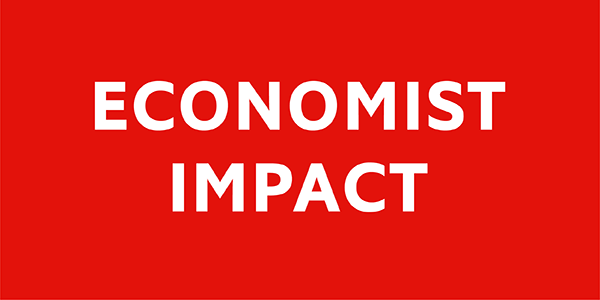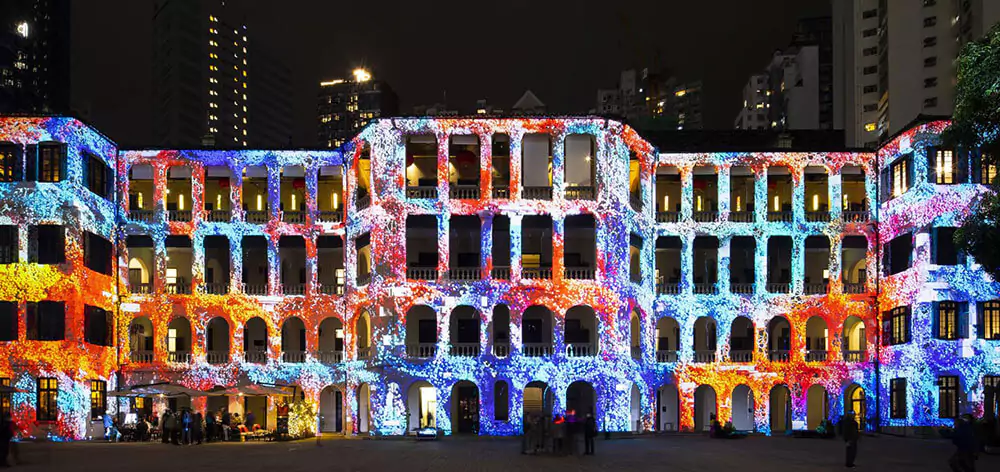ARTICLE
Custom content is written, produced or curated by either a sponsor or by EI Studios, the custom division of Economist Impact. Such placements are clearly labelled as Advertisement, Advertisement feature, Sponsored content, Sponsor perspective, or words to that effect wherever they appear on our website or apps. Neither The Economist news and editorial team, nor Economist Impact’s independent experts, have any involvement in the creation of this content.
Improved access to arts education, supportive government policies and impressive new infrastructure are cementing Hong Kong as a top destination for artists and art enthusiasts alike
Long known for its record-setting art auctions that rival sales in New York and London, Hong Kong is emerging as a vibrant international arts hub, home to a growing number of world-class museums, galleries, and cultural events, and an ecosystem that’s incubating a young generation of talent.
The city’s burgeoning arts scene is a reflection of Hong Kong’s unique heritage and blend of Asian and Western cultures, its ability to adapt to new trends and ideas, and government support.


In addition to factors like the sophisticated local art market, zero tax on art deals, and a maturing arts education system, a wave of new art infrastructure has come online in the past few years, enhancing Hong Kong’s position as a thriving arts hub.
“A lot has changed in the 11 years since I landed here,” says Pi Li, head of art at Tai Kwun Contemporary, located in Hong Kong’s former Central Police Station Compound. Pi Li took up his current role in February 2023, having moved to the city from Beijing in 2012 to work at M+, where he was Sigg senior curator and head of curatorial affairs.
“The whole cultural landscape has transformed. After fairs such as Art Basel came to Hong Kong 10 years ago, blockbuster art galleries followed. In the past few years there’s been huge investment in art institutions. Now, there’s a huge spectrum of cultural institutions, which is exerting a huge effect on culture and arts in the region,” he says.
"In the past few years there’s been huge investment in art institutions. Now, there’s a huge spectrum of cultural institutions, which is exerting a huge effect on culture and arts in the region."
Pi Li, head of art, Tai Kwun Contemporary
Generation next
From street and multimedia art to contemporary installations and virtual art, Hong Kong is quickly establishing itself as a creative powerhouse.
Born in 1988, in Guangdong province, China, Trevor Yeung moved to Hong Kong as a boy, and went on to study art at Hong Kong Baptist University’s Academy of Visual Arts, graduating in 2010.
“Tuition fees in Hong Kong are not as expensive as other places, and there are government grants and low-interest loans for students,” says Yeung. “I had thought of doing an MA (Masters of Art) in the UK, but it cost too much.”
After graduating, Yeung worked as a project assistant in an art space before becoming a full-time artist in 2013. He worked with Para Site, a non-profit art organisation that invites international artists to Hong Kong, where he learned about the art industry from an international perspective.
Working in Hong Kong’s blossoming art industry, Yeung says, helps him learn about the commercial aspects of being an artist, such as marketing and working with galleries, as well as fostering cultural exchanges.
“Para Site has a programme that invites international artists to Hong Kong. By working with them, I learned much more about how artists are seen in other places,” says Yeung.
Yeung’s mixed-media work, which has been exhibited in Finland, France, Switzerland, and mainland China, among other locations, examines the inner logic of closed systems and how it shapes human emotions.
On September 28, 2023, he presented his first solo exhibition in the United Kingdom at Gasworks, a non-profit contemporary visual arts organisation in London.


A friendly distance, exhibition installation view
Photo by Trevor Yeung
Courtesy of the artist
© Trevor Yeung
Cultivating creativity
Hong Kong’s cultural and creative industries make up one of the economy’s most dynamic sectors, accounting for some 4.5% of GDP in 2021, and there are big plans to boost that contribution.
The Hong Kong Special Administrative Region Government (HKSARG) in 2022 unveiled a decade-long plan to develop Hong Kong’s arts and cultural facilities, which will build on the city’s existing infrastructure and add new venues. In 2022-23, government recurrent expenditure on developing the arts and culture was $756.4 million (HK$5.9 billion), up from $551.2 million (HK$4.3 billion) five years previously.
China’s 14th five-year plan outlines Hong Kong’s development trajectory as an east-meets-west centre for international cultural exchange. Hong Kong will host the Greater Bay Area (GBA) Culture and Arts Festival in 2024, with a view to enhancing arts and cultural exchanges among the Guangdong-Hong Kong-Macao GBA by showcasing 5,000 Hong Kong and mainland artists as well as other practitioners in the arts and cultural sectors.
The HKSARG’s four-pronged approach to expanding the city’s cultural and creative industries comprises developing world-class cultural facilities and a pluralistic cultural environment; enhancing cultural exchanges and co-operation with the mainland, and strengthening connections with overseas arts and cultural organisations; leveraging technology; and nurturing talent.

4.5%
Share of GDP from Hong Kong’s cultural and creative industries in 2021
In his inaugural policy address in October 2022, chief executive John Lee Ka-Chiu outlined initiatives to nurture arts and cultural talents. These include new arts and cultural internship programmes and subsidies for students of the Hong Kong Academy for Performing Arts (HKAPA) and other tertiary institutions majoring in culture and arts-related subjects to undertake internships in arts groups and at the West Kowloon Cultural District, with the goal of helping them develop a career in the sectors.
Also, HKAPA will conduct a feasibility study to consider the long-term need of establishing another campus in the Northern Metropolis, a proposed new urban centre for up to 2.5 million residents to be developed close to the boundary with mainland China.
“The education department is spending much more money on art education, having added the arts to STEM education a few years ago. This has injected oxygen into creativity,” says renowned ceramist Rosanna Li Wei-han, former assistant professor at Hong Kong Polytechnic University’s School of Design.
In July 2022, Hong Kong Baptist University established the School of Creative Arts, comprising the Academy of Film, Academy of Music and Academy of Visual Arts, which will run two new transdisciplinary programmes, the Bachelor of Arts and Science in Arts and Technology and the Bachelor of Arts in Business Administration (Global Entertainment).
“Working in Hong Kong’s blossoming art industry helps us learn about the commercial aspects of being an artist, such as marketing and working with galleries, as well as fostering cultural exchanges.”
— Trevor Yeung, artist
Government-administered funding schemes such as the Arts Capacity Development Funding Scheme and the Art Development Matching Grants Scheme support large-scale cultural initiatives and encourage arts groups and organisations to expand their funding sources, and foster a culture of sponsoring and promoting arts and culture in the business sector and community.
Funding support for creatives also comes from the quasi-government organisations like The Hong Kong Jockey Club Charities Trust and Hong Kong Arts Development Council.
Meanwhile, the Hong Kong Art Gallery Association runs an Artists Residency Abroad Funding Scheme that provides resources for artists seeking international experience.
“I started from scratch, had to take a full-time job, and didn’t have any scholarships or grants. Today, there are many more opportunities for grants, sponsorships, mentorships and various programmes, and training to take up roles like gallery manager or curator,” says Rosanna Li, who received a Bachelor in Education from the UK’s University of Liverpool in 1986 and completed her MA in Education Management from Cheltenham and Gloucester College in 1989.










New vistas
Over the past five years, the city has added to and revamped its art institutions, creating a growing set of opportunities for homegrown artists.
From its opening in 2018 to September 2022, Tai Kwun Contemporary held over 2,800 public programmes, from exhibitions and performances, to talks and workshops, shining a spotlight on the works of dozens of local contemporary artists alongside respected international artists. Its artists’ studios and residency apartments have provided space for budding Hong Kong talents to develop their practice.
The Hong Kong Museum of Art underwent a facelift, which expanded the total exhibition area from about 7,000 square metres to 10,000 square metres, reopening in November 2019. It houses an art collection of over 18,800 items, representing the unique cultural legacy of Hong Kong’s connections across the globe.

M+, Hong Kong
Photo by Iwan Baan
Courtesy of Herzog & de Meuron
© Herzog & de Meuron

Meanwhile, M+, a global museum of visual culture in the sprawling West Kowloon Cultural District, opened in November 2021. Dedicated in part to Hong Kong’s visual culture of the 20th and 21st centuries, its collection includes works by artists such as Shirley Tse, Kan Tai-keung and New Ink Painting movement advocate Irene Chou.
“Hong Kong’s young people are becoming more conscious of their own identity and drawing inspiration from the city’s culture.”
— Rosanna Li Wei-han, ceramist
As well as increased resources and more art facilities, young artists are drawing inspiration from Hong Kong’s unique cultural heritage.
“Hong Kong’s young people are becoming more conscious of their own identity and drawing inspiration from the city’s culture. Its unique position as an in-between culture, blending both Eastern and Western influences, is particularly interesting and important to build upon,” says Rosanna Li.
EXPLORE MORE

Finance
video
Hong Kong: a global connector of finance
As a global financial centre, Hong Kong links mainland China and the rest of the world with its financial services institutions, banks, regulators and prominent pool of talent. It is also a pioneer in the green finance market.
Watch video

Arts & Culture
video
Hong Kong: art from the heart of Asia
Hong Kong's arts and cultural scene is flourishing, with a diverse variety of artists, museums and galleries that add colour to a thriving hub at the intersection of East and West.
Watch video

Arts & Culture
infographic
Hong Kong rolls out red carpet for art
This city has developed a vibrant cultural ecosystem, and with ambitious government initiatives well underway, many focused on nurturing a new generation of local artists, it's set to reach new heights as a global arts powerhouse.
See infographic

Technology
video
Hong Kong: an ecosystem for innovators
Innovators will find that magic can happen in Hong Kong, thanks to the start-up hub's vibrant ecosystem that enables diverse entrepreneurs from around the world to make connections, solid infrastructure, and ample opportunities found in the Greater Bay Area cities across the border.
Watch video

Finance
infographic
Hong Kong’s green finance ecosystem blossoms
Uniquely positioned as an international financial centre and a super-connector to mainland China’s burgeoning demand for green investment, Hong Kong is playing a pivotal role in the world’s journey towards sustainability.
See infographic

Finance
article
Hong Kong pioneers new era of green finance
A new carbon credit market, rising green debt issuance and its role as a finance facilitator under the Guangdong-Hong Kong-Macao Greater Bay Area are propelling Hong Kong’s development as a green finance hub.
Read article

Technology
infographic
Hong Kong, a world-leading dynamic startup ecosystem
The combination of its ideal location, strong economy, deep capital markets, and pro-business policies is turbocharging Hong Kong’s startup ecosystem. The SAR’s rapidly expanding network of incubators and accelerators, and large pool of angel investors and venture capitalists, provide startups with all they need to scale up.
See infographic

Technology
article
Hong Kong’s innovation and technology startup ecosystem revs up
Better known for its finance, tourism and logistics industries, Hong Kong is putting innovation front and centre of its development strategy.
Read article
Back to top








